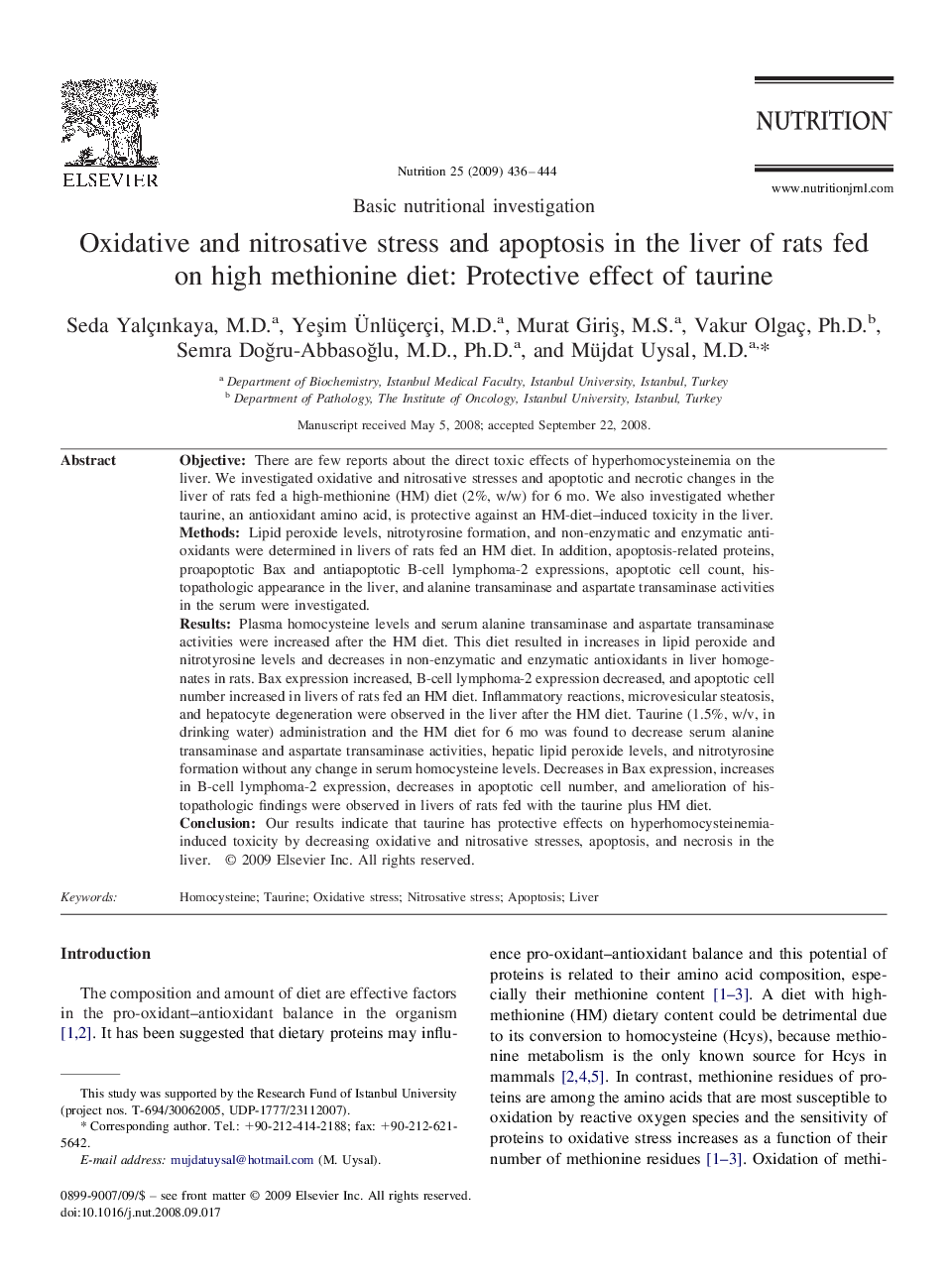| Article ID | Journal | Published Year | Pages | File Type |
|---|---|---|---|---|
| 3277107 | Nutrition | 2009 | 9 Pages |
ObjectiveThere are few reports about the direct toxic effects of hyperhomocysteinemia on the liver. We investigated oxidative and nitrosative stresses and apoptotic and necrotic changes in the liver of rats fed a high-methionine (HM) diet (2%, w/w) for 6 mo. We also investigated whether taurine, an antioxidant amino acid, is protective against an HM-diet–induced toxicity in the liver.MethodsLipid peroxide levels, nitrotyrosine formation, and non-enzymatic and enzymatic antioxidants were determined in livers of rats fed an HM diet. In addition, apoptosis-related proteins, proapoptotic Bax and antiapoptotic B-cell lymphoma-2 expressions, apoptotic cell count, histopathologic appearance in the liver, and alanine transaminase and aspartate transaminase activities in the serum were investigated.ResultsPlasma homocysteine levels and serum alanine transaminase and aspartate transaminase activities were increased after the HM diet. This diet resulted in increases in lipid peroxide and nitrotyrosine levels and decreases in non-enzymatic and enzymatic antioxidants in liver homogenates in rats. Bax expression increased, B-cell lymphoma-2 expression decreased, and apoptotic cell number increased in livers of rats fed an HM diet. Inflammatory reactions, microvesicular steatosis, and hepatocyte degeneration were observed in the liver after the HM diet. Taurine (1.5%, w/v, in drinking water) administration and the HM diet for 6 mo was found to decrease serum alanine transaminase and aspartate transaminase activities, hepatic lipid peroxide levels, and nitrotyrosine formation without any change in serum homocysteine levels. Decreases in Bax expression, increases in B-cell lymphoma-2 expression, decreases in apoptotic cell number, and amelioration of histopathologic findings were observed in livers of rats fed with the taurine plus HM diet.ConclusionOur results indicate that taurine has protective effects on hyperhomocysteinemia-induced toxicity by decreasing oxidative and nitrosative stresses, apoptosis, and necrosis in the liver.
